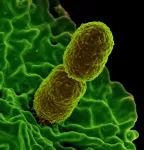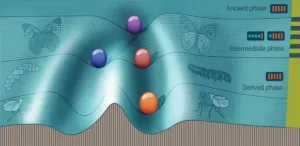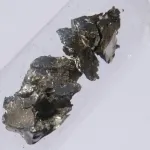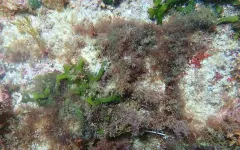(Press-News.org) There is currently no cure for osteoarthritis, but a group of scientists believe they've discovered a method through which a simple knee injection could potentially stop the disease's effects. These researchers showed that they could target a specific protein pathway in mice, put it into overdrive and halt cartilage degeneration over time. Building on that finding, they were able to show that treating mice with surgery-inducedknee cartilage degeneration through the same pathway via the state of the art of nanomedicine could dramatically reduce the cartilage degeneration and knee pain. These findings were published in Science Translational Medicine.
"Our lab is one of the few in the world studying epidermal growth factor receptor (EGFR) signaling in cartilage and, from the beginning, we have found that EGFR deficiency or inactivation accelerates osteoarthritis progression in mice," said Ling Qin, PhD, an associate professor of Orthopaedic Surgery. "Thus, we proposed that its activation could be used to treat osteoarthritis, and in this study, we've proven for the first time that over-activating it inside the knee blocks the progression of osteoarthritis."
Qin explained that tests from the other labs that do work with EGFR have drawn "confusing and controversial" results. But Qin's lab has consistently found the ties between osteoarthritis and EGFR deficiencies, which formed the bedrock of their hypothesis.
The researchers compared typical mice with those that had a molecule that bound to EGFR, called a ligand, that was over-overexpressed in chondrocytes, the building blocks of cartilage. This overexpression drives the over-activation of EGFR signaling in knee cartilage. When examining them, the mice with overexpressed HBEGF (the EGFR ligand) were found to consistently have enlarged cartilage, meaning that it wasn't wearing away like the mice who had normal EGFR activity. Moreover, when these mice aged to adulthood, their cartilage was resistant to degeneration and other hallmarks of osteoarthritis, even if their knee's meniscus was damaged.
To further prove that the over-activated EGFR was the reason for the mice's resiliency, the researchers found that gefitinib treatments, which are designed to block EFGR function, took away the protection against cartilage degeneration.
With all of this knowledge gained, the researchers turned an eye toward potential clinical treatment solutions. In a new series of tests they created nanotherapeutics by attaching a potent EGFR ligand, transforming growth factor-alpha, onto synthetic nanoparticles, to inject into mice who already had cartilage damage in their knees.
"Free EGFR ligands have a short half-life and cannot be retained inside of a joint capsule due to their small size," explained Zhiliang Cheng, PhD, a research associate professor in Penn Engineering and another of the co-corresponding authors on the paper. "Nanoparticles help to protect them from degradation, restrict them within the joint, reduce off-target toxicity, and carry them deep inside dense cartilage to reach chondrocytes."
When mice were injected with these nanotherapeutics, the researchers saw that they slowed cartilage degeneration and bone hardening, as well as eased knee pain. There also were no major side effects seen in the mice who were treated.
"While many of the technical aspects of this application still need to be worked out, the ability to stop or slow the course of osteoarthritis with an injection rather than surgery would dramatically change how we feel and function as we age and after injury," said one of the study's co- authors, Jaimo Ahn, MD, PhD, a former faculty member at Penn Medicine now chief of orthopaedic trauma and associate chair of orthopaedic surgery at the University of Michigan.
The treatment is likely some time away for human patients, but the nanoparticles used have already been clinically tested and deemed safe, which makes it easier to quickly translate to clinical use.
"There is a great unmet medical need for a disease-modifying osteoarthritis drug," Qin said. "In the future, we will optimize the drug design and test it in large animals before proceeding to clinical trials. We hope our research could lead to a novel drug that will improve the health and well-being of the more than 27 million osteoarthritis patients in the United States."
INFORMATION:
This study was supported by the National Institutes of Health (grant numbers R01AR066098, R01DK095803, R01AG067698, P30AR069619, and R01NS100892).
Lead author on this study was Yulong Wei. Other authors included Lijun Luo, Tao Gui, Feifan Yu, Lesan Yan, Lutian Yao, Leilei Zhong, Wei Yu, Biao Han, Jay M. Patel, Jessica F. Liu, Frank Beier, L. Scott Levin, Charles Nelson, Zengwu Shao, Lin Han, Robert L. Mauck, and Andrew Tsourkas.
The Gulf of Mexico holds huge untapped offshore oil deposits that could help power the U.S. for decades.
The energy super basin's longevity, whose giant offshore fields have reliably supplied consumers with oil and gas since the 1960s, is the result of a remarkable geologic past - a story that began 200 million years ago among the fragments of Pangea, when a narrow, shallow seaway grew into an ocean basin, while around it mountains rose then eroded away.
The processes that shaped the basin also deposited and preserved vast reserves of oil and gas, of which only a fraction has been extracted. Much of the remaining oil lies buried beneath ancient salt layers, just recently illuminated ...
MADISON, Wis. -- The demand for COVID-19 vaccines continues to outpace supply, forcing public health officials to decide who should be first in line for a shot, even among those in the same pool of eligible vaccine recipients.
To assist these efforts, researchers at the University of Wisconsin School of Medicine and Public Health and UW Health have developed a tool that incorporates a person's age and socioeconomic status to prioritize vaccine distribution among people who otherwise share similar risks due to their jobs. The tool helps identify those who are at greater risk of severe ...
WHAT:
Scientists studying the body's natural defenses against bacterial infection have identified a nutrient--taurine--that helps the gut recall prior infections and kill invading bacteria, such as Klebsiella pneumoniae (Kpn). The finding, published in the journal Cell by scientists from five institutes of the National Institutes of Health, could aid efforts seeking alternatives to antibiotics.
Scientists know that microbiota--the trillions of beneficial microbes living harmoniously inside our gut--can protect people from bacterial infections, but little is known about how they provide protection. Scientists are studying the microbiota with an eye to finding or enhancing natural treatments to replace antibiotics, which ...
A new study, led by a theoretical physicist at the U.S. Department of Energy's Lawrence Berkeley National Laboratory (Berkeley Lab), suggests that never-before-observed particles called axions may be the source of unexplained, high-energy X-ray emissions surrounding a group of neutron stars.
First theorized in the 1970s as part of a solution to a fundamental particle physics problem, axions are expected to be produced at the core of stars, and to convert into particles of light, called photons, in the presence of a magnetic field.
Axions may also make up dark matter - the mysterious stuff that accounts for an estimated 85 percent of the total mass of the universe, yet we have so far only seen its gravitational effects on ordinary matter. Even if the X-ray excess turns out not to be ...
Computer simulations of cells evolving over tens of thousands of generations reveal why some organisms retain a disused switch mechanism that turns on under severe stress, changing some of their characteristics. Maintaining this "hidden" switch is one means for organisms to maintain a high degree of gene expression stability under normal conditions.
Tomato hornworm larvae are green in warmer regions, making camouflage easier, but black in cooler temperatures so that they can absorb more sunlight. This phenomenon, found in some organisms, is called phenotypic switching. Normally hidden, this switching is activated in response to dangerous genetic or environmental changes.
Scientists have typically studied this ...
Scientists at the Institute of Physics of the University of Tartu have found a way to develop optical quantum computers of a new type. Central to the discovery are rare earth ions that have certain characteristics and can act as quantum bits. These would give quantum computers ultrafast computation speed and better reliability compared to earlier solutions. The University of Tartu researchers Vladimir Hizhnyakov, Vadim Boltrushko, Helle Kaasik and Yurii Orlovskii published the results of their research in the scientific journal Optics Communications.
While in ordinary computers, the units of information are binary digits or bits, in quantum computers the units are quantum bits or qubits. In an ordinary computer, information is mostly ...
Tsukuba, Japan - Out with the old, in with the new, as the New Year's saying goes, but not where the marine environment is concerned. Researchers from Japan have discovered that ocean acidification keeps algal communities locked in a simplified state of low biodiversity.
In a study published on 11th January 2021 in Global Change Biology, researchers from the University of Tsukuba have revealed that as oceanic carbon dioxide levels rise, the biodiversity and ecological complexity of marine algal communities decline.
Ocean acidification is the continuing increase in the acidity of the Earth's oceans, caused by the absorption of atmospheric carbon dioxide (CO2). ...
The celebrations in the 250th anniversary of the birth of Ludwig van Beethoven would not be the same without Herbert von Karajan's brilliant performances conducting Beethoven's memorable symphonies. The execution of any musical symphony is a hugely difficult task, demanding very significant skills on the part of each individual musician - but perhaps the most difficult task lies with the conductor who has to orchestrate the musicians into making the music cohesively come alive and speak to our deepest emotions.
In many ways the human brain is like an orchestra, where different regions perform very different types of processing, such ...
A new study conducted at the University of Turku, Finland, shows that patients with a schizophrenia spectrum disorder have an increased risk of Parkinson's disease later in life. The increased risk may be due to alterations in the brain's dopamine system caused by dopamine receptor antagonists or neurobiological effects of schizophrenia.
The record-based case-control study was carried out at the University of Turku in collaboration with the University of Eastern Finland. The study examined the occurrences of previously diagnosed psychotic disorders and schizophrenia in over 25,000 Finnish Parkinson's disease (PD) patients ...
Tsukuba, Japan - A team of researchers lead by the University of Tsukuba have created a new theoretical model to understand the spread of vibrations through disordered materials, such as glass. They found that as the degree of disorder increased, sound waves traveled less and less like ballistic particles, and instead began diffusing incoherently. This work may lead to new heat- and shatter-resistant glass for smartphones and tablets.
Understanding the possible vibrational modes in a material is important for controlling its optical, thermal, and mechanical properties. The propagation of vibrations in the form of sound of a single ...





